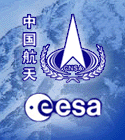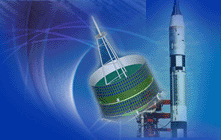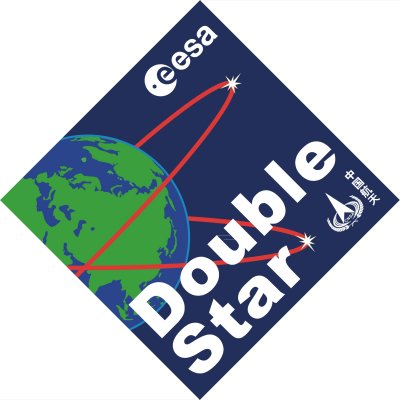







The Double Star and Cluster spacecraft have now been operating in coordination since summer 2004, and are providing a unique opportunity to study the magnetosphere. The Cluster mission is providing extremely detailed and revealing multi-point measurements in many regions of the magnetosphere, and Double Star, by virtue of the orbit design, frequently makes observations in key regions that taken together with Cluster observations enhance our view of how the magnetosphere is behaving. Following on from the successful ISSI team studying “Comparative Cluster-Double Star measurements of the dayside magnetosphere”, the current proposal seeks to extend the investigation to the nightside, in particular to magnetotail studies using data from the summers of 2004, 5 and 6. Although all six spacecraft orbits have apogee's aligned near the same MLT, TC-2 rapidly samples field lines that map along the length of the magnetotail, TC-1 spends most of its time in the current disruption region (CD) of the near-Earth magnetotail at apogee (8-10 RE), while Cluster crosses through the plasma sheet further down the tail (~19 RE) near the Near-Earth Neutral Line (NENL) formation region. Such a constellation offers the possibility of performing convincing simultaneous timing measurements of substorm signatures in both the near-Earth-tail and the near-Earth neutral line region. Together with ground-based data, the long standing question of whether substorm activity originates in the CD region or the NENL region will be probed. Magnetotail behaviour is richer and more complex than implied by the question of whether the NENL or CD model might explain substorms, as early Cluster and Double star work is revealing. Our proposed work will use data from the many instruments onboard each spacecraft, available via the Co-I status of the several of the team members who have specific expertise in this type of data analysis. Supplementary data from other useful spacecraft and ground based facilities will be employed as appropriate. We will capitalize on the expertise of our team members, selected for their experience of nightside studies and with the relevant datasets, in order to identify and effectively exploit profitable study intervals. The conclusion of this study will involve the drafting of one or more papers on the work carried out and a review of the conjunctions identified. We expect that our project will produce results that will play an important role in informing and stimulating scientists working on the forthcoming THEMIS mission, which will launch 5 spacecraft in October 2006 to study the magnetotail.
Near-Earth substorm features from multiple satellite observations, Lui et al. J. Geophys. Res., 113, A07S26, doi:10.1029/2007JA012738, 2008.
Magnetotail dipolarisation and associated current systems observed by Cluster and Double Star, Volwerk et al, J. Geophys. Res.,,113, A08S90, doi:10.1029/2007JA012729, 2008.
Flattened current sheet and its evolution in substorms, Shen et al., J. Geophys. Res.,,113, A07S21, doi:10.1029/2007JA012812, 2008.
Cluster and Double Star Multipoint Observations of a Plasma Bubble, Walsh et al submitted to Annales Geophysicae
Dr Andrew Fazakerley (1) and Professor M.W. Dunlop (2) ,
Dr A. Lui (3)
Professor Z. Pu (4) , Dr X. Cao (4), Dr L. Xie (4)
Dr. C. Shen (5), Dr J. Shi (5)
Dr. M. Volwerk (6)
Dr. L. Kistler, Dr C. Mouikis (7)
Dr. M.G.G.T. Taylor (8)
Professor. M.Lester (9), Dr A. Grocott (9)
Dr. J. A. Davies (2).
Dr I. Alexeev (1), Dr A. Walsh (1), Dr C. Forsyth (1)
1. Mullard Space Science Laboratory, Holmbury St. Mary, Dorking, Surrey, RH5 6NT,
2. Space Sciences Division, SSTD, Rutherford Appleton Laboratory, Chilton, Didcot, OX11 0QX, U.K
3. Johns Hopkins University - Applied Physics Lab., Johns Hopkins Rd, Laurel, MD 20723-6099, USA
4. School of Earth and Space Sciences, Peking University, No.5, Yiheyuan Street, 100871 Beijing, China,
5. Center for Space Science and Applied Research, Chinese Academy of Sciences, P.O.Box: 8701, Beijing 100080, China
6. Institut für Weltraumforschung, Österreichische Akademie der Wissenschaften, Schmiedlstraße 6, 8042 Graz, Austria
7. Department of Physics and Institute for the Study of Earth, Oceans and Space, Univ. of New Hampshire, USA
8. ESA/ESTEC, Code SCI-SH, Postbus 299, Keplerlaan 1, 2200 AG Noordwijk, The Netherlands
9. Department of Physics and Astronomy, University of Leicester, UK
First Meeting Presentations and Event information (password required)
Second Meeting Presentations and Event information (password required)
Third Meeting Presentations and Event information (password required)
post-fondu meeting 2009, team iconoclast absent, photo by AG
page by Andrew Fazakerley
